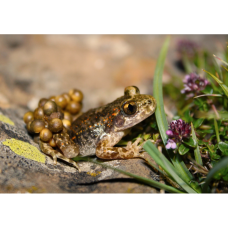Presentation:
Professor Dmitry Sokoloff is an expert in evolutionary plant morphology and taxonomy of some angiosperm groups. His PhD and DSc studies were devoted to multi-disciplinary studies of a group of legumes, tribe Loteae, that includes some important pasture plants as well as a key model legume species, Lotus japonicus. Together with Paula Rudall, Margarita Remizowa and other colleagues, Dmitry performed detailed studies of various angiosperms with strong deviations from conventional morphological grondplan, for example the mainly Australian family Hydatellaceae that was once regarded a derived monocot group, but then was recognized an early-divergent angiosperm lineage.
Title of the presentation : Evolution of land plant embryos and female reproductive structures (archegonia)
Land plants are a morphologically well-defined clade also called embryophytes. The latter name emphasizes a feature specific to land plants, namely the presence of a sporophyte embryo. In fact, the very occurrence of the diploid sporophyte is a synapomorphy of the land plants. The embryo develops after fertilization in specific female reproductive structures of land plants, archegonia. No direct homologies between reproductive structures of algae and land plant archegonia can be traced. There are two major groups of extant land plants, bryophytes with haploid-dominating life cycles (liverworts, mosses and hornworts) and tracheophytes with diploid-dominating life cycles (lycopsids, ferns and seed plants). Traditionally, tracheophytes were considered a clade derived from paraphyletic bryophytes. Morphology of bryophytes, especially liverworts, was considered largely ancestral for land plants. Recent phylogenetic and phylogenomic studies, in contrast suggest either sister relationships between extant bryophytes and tracheophytes or sister position of hornworts with respect to other extant land plants. The talk will review comparative data on structure and development of land-plant embryos and archegonia in the context of these hypothesis as well as some specific questions related to the origins of seed plants and angiosperms. Despite strong diversity, archegonia of most land plants share a common developmental motif. We termed this motif a T-shaped pattern. Basic patterns of evolutionary transformations of archegonium ontogeny are recognized. The fully exposed archegonia are traditionally viewed as an ancestral (plesiomorphic) condition in land plants, but there is no direct support for this view. We speculate that the fully exposed condition is derived and synapomorphic for so-called setaphytes (mosses and liverworts). The fully sunken hornwort archegonia may be similar to the ancestral type of land-plant archegonia. Developmental evidence suggests that archegonium necks of setaphytes and tracheophytes are not homologous to each other. Neck-cell arrangement is much more plastic in archegonia of gymnosperms with sperm cell delivery by pollen tube (siphonogamy), in which the neck plays a role similar to pollen-tube transmitting tissue of angiosperms. Angiosperm synergids are probably homologues of gymnosperm neck cells, and the angiosperm egg cell is probably homologous to the ventral canal cell of gymnosperms. Developmental genetic bases of archegonium diversity in land plants remain to be understood. Even descriptive developmental data are currently missing or controversial for some key lineages of land plants. In contrast to traditional views, we suggest that exoscopic embryo may represent a derived rather than ancestral condition in land plants. Evolutionary origin of cotyledons – an important seed-plant specific character – remains enigmatic.
Publications:
Sokoloff D.D., Remizowa M.V. 2021. Diversity, development and evolution of archegonia in land plants. Botanical Journal of the Linnean Society 195: 380-419.
Sokoloff D.D., Rudall P.J., Bateman R.M., Remizowa M.V. 2015. Functional aspects of the origin and subsequent evolution of cotyledons in seed plants. Botanica Pacifica 4: 35-47.





